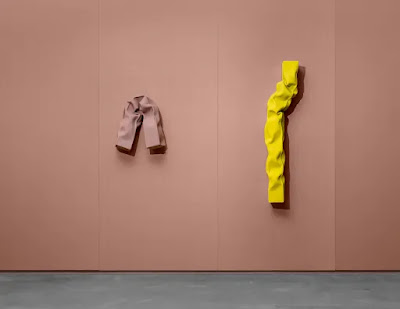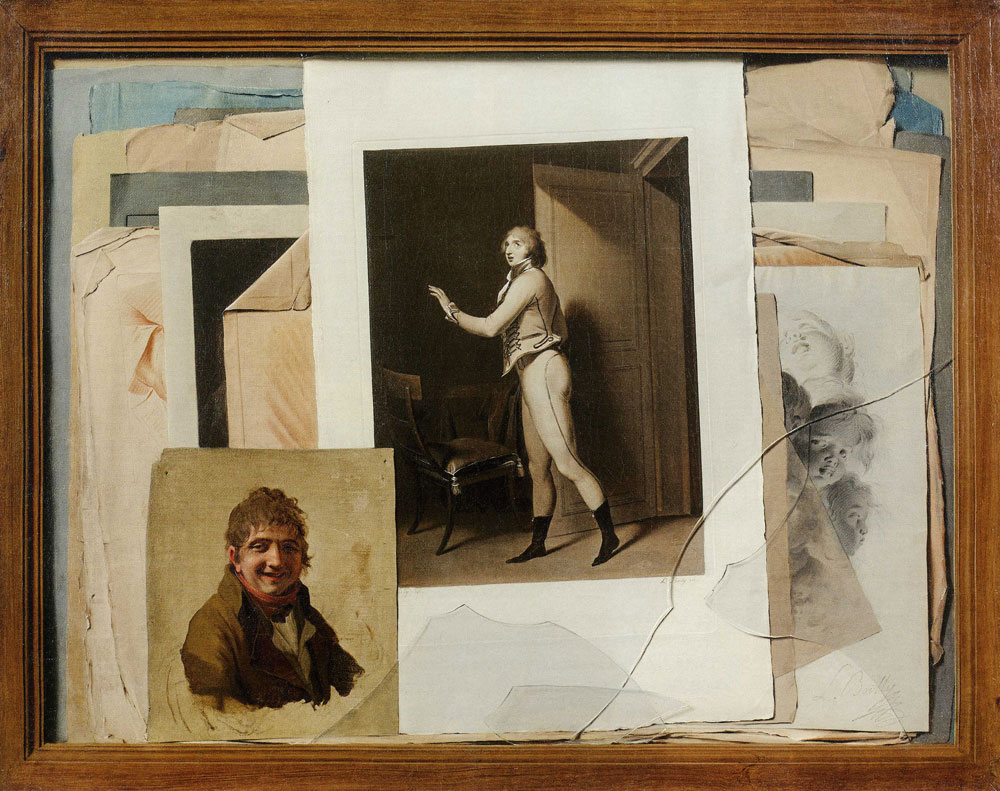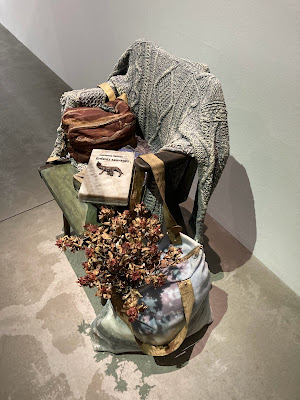 |
| Lubaina Himid, Between the Two My Heart is Balanced, 1991 |
It was a real treat to see this superb exhibition of Lubaina Humid's work on my first visit back at Tate Modern since BC. It was also my first visit to the new wing, and happily, I didn't need to spend much time in the access spaces. While I understand their architectural innovation, they were too far on the dark brick and concrete side to make them anything more than transitional.
 |
| Lubaina Himid, Le Rodeur, The Exchange, 2016 |
The critics have not been kind to Himid or Tate Modern for the exhibition's apparent acquiescence to the institutional demands of art, but I couldn't help thinking these detractors had missed the point of the work. This is not angry, volatile art designed to stir up a revolution. Of course, this lack of attention to racial and colonial politics is what disappoints the gatekeepers of who says what in art today. Himid's are paintings in which people have conversations, in which the interactions between multiple figures are more important than the public impact of their conversations. The paintings are peopled with black people discussing, rather than black and white people arguing or raising fists. Indeed, the absence of white people from the paintings in direct contrast to the near-absence of black people from the exhibition could hardly be missed. Although Himid's work is easier to access, more narrative and efflorescent, I kept sensing that these paintings would juxtapose for their contrast to those of Marlene Dumas or Kerry James Marshall. In Himid's work, there is none of the pain and sorrow of the South African painters.
 |
| Lubaina Himid, Ball on Shipboard, 2018 |
The exhibition is, like much of Himid's body of work, in many ways, about space. it is about the spaces we occupy, the things with which we fill spaces. The creation and building of space, the conventions and colours of construction, and how we are living in spaces that are given us, rather than spaces we create. The paintings are about how often those spaces don't suit us, don't work for us. Moreover how we are constantly trying to fit into these spaces nevertheless, to change ourselves to fit. Similarly, Himid's painted spaces are about colour. The colours are magnificent, they are very much those of Africa, used to distinguish unfinished spaces, infinite spaces, as well as those that are limiting and falling in on us. The spaces are typically the spaces in which we (especially women) live, but they are also spaces opening up onto public and political life. In The Operating Table, for example, three women discuss a map, the ownership and use of land.
 |
| Lubaina Himid, The Operating Table, 2019 |
One room of the exhibition is given over to blue and the language we use to describe, evoke and recall blue. In a connection to the discourse on space, Himid's reflections on colour are about how blue creates perspective (how we see it/ how we describe it/how we occupy it) depending on our culture and language. The installation shines a light on what we are told of space, what we learn through reading, culture, tradition, and of course, advertising. And then, in the blue room, questions of memory and history are everywhere as they are sequestered in blue furniture, blue objects, fabric from the past.
 |
| Lubaina Himid, Three Architects, 2019 |
I found the exhibition to be delightful. The brilliant colours are enchanting and uplifting, themselves creating complexity within the image. One of the things that I loved about the groups of people in each painting was that they were never in power struggles and neither were they buying into gender stereotypes. Women discuss what it would be to have had women discover the world, build houses and lead countries. Men meet each other in bars and turn up at the bottom of drawers. Somehow Himid manages to communicate the result of the power and manipulation that is now invisible. Just as it is in the world that we live in.
 |
| Lubaina Himid, Tide Change, 1998 |
In many of Himid's paintings, the sea is the central element. Even when the image depicts people in conversation, at parties, and at work, they are often surrounded by the sea. For Himid, in the presence of the sea, her paintings reveal what is a pivotal concept in her art. The exhibition reveals double-entendres, inviting the visitor to see differently, see things from multiple different perspectives. And we see the ocean from every angle. We see it through windows, as a backdrop to conversations, surrounding a lookout, and even in abstract composition.
Himid's work may be "old school" as one reviewer for The Guardian put it, or as others have insisted, lacking the cutting edge so key to a growing recognition of racial and cultural identity. But that makes me a fan of the old school. As narratives these paintings take time to digest, to read, to incorporate into our understanding of the way things are. I would rather look at art that makes me think, than art that gives predictable answers to complex contemporary concerns.


















































